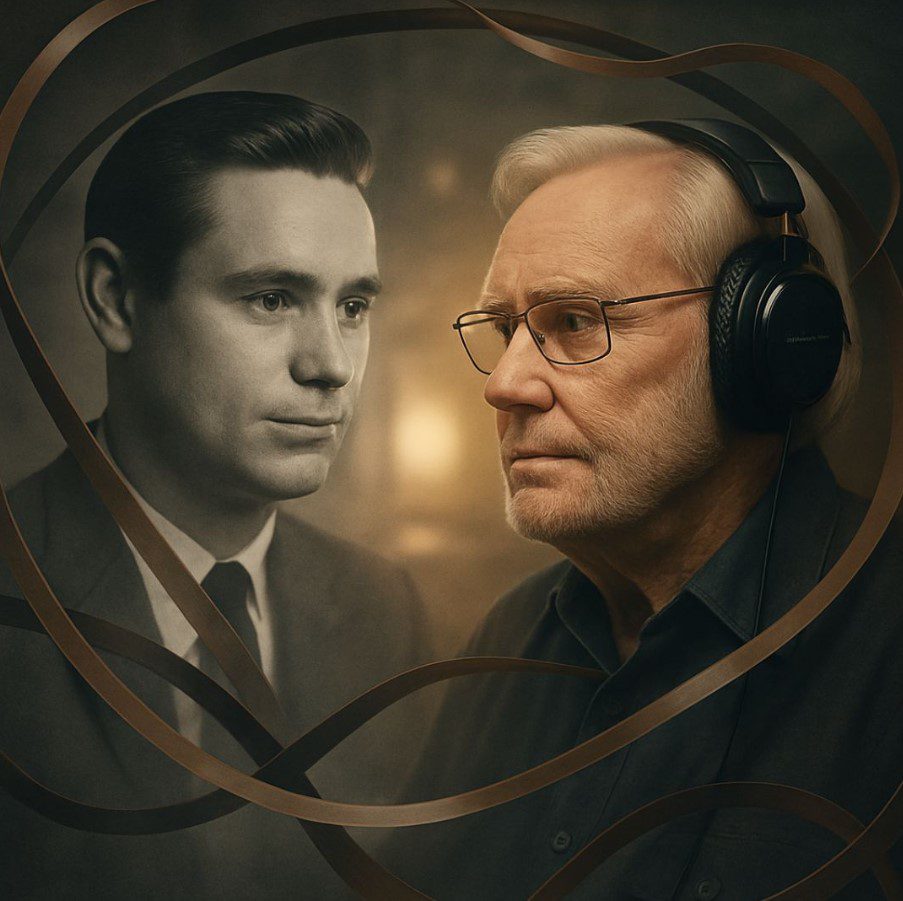
The Night That Redefined Country Music
On a quiet evening in Nashville, George Jones entered a recording studio carrying the weight of a thousand unspoken stories. Observers remarked that he appeared as though he had already lived three lifetimes, with eyes heavy from regret and experiences that could not be measured by ordinary years. The atmosphere was tense, the studio lights dimmed, and the bottle of whiskey sat untouched—a symbol of restraint in a room full of anticipation. For a long moment, silence dominated, as everyone waited for the man to unveil the truth hidden within his soul.
The Confession That Transcended Music
When Jones finally nodded, the tape began to roll. What emerged was not just a song, but a confession, a raw and unfiltered glimpse into the emotional depths of one of country music’s greatest icons. Every midnight phone call that never came, every apology left unsent, every lingering ghost of past relationships was woven into his voice. Engineers at the studio later recounted that they could feel the tension and stillness, the moment just before a man allows his innermost truth to escape through melody.
Jones did not need to mention names. The crack in his voice on the third verse spoke volumes. Those present understood every ounce of heartbreak, regret, and longing without a single explicit reference. The power of that performance was not in words alone but in the authenticity that radiated from every note, proving that music could capture the rawest human emotions.
A Performance Beyond Fame
As the final chord faded, George simply whispered, “That’ll do,” and walked out into the cool Nashville night. The track eventually climbed the charts, but for those who witnessed the session, the moment was never about fame or commercial success. It was a personal catharsis, a man’s struggle to articulate feelings he could not voice in everyday life. The emotional resonance of that night solidified Jones’ reputation as more than a performer; he was a storyteller whose music bled truth into every listener’s heart.
The Technical Brilliance Behind the Emotion
While the emotional weight of the recording is legendary, the technical execution was equally extraordinary. Jones’ ability to modulate his tone, control his vibrato, and convey the subtle nuances of human sorrow created a sonic landscape that engineers described as “almost tangible.” Each note carried a dual impact, providing both melodic beauty and raw narrative power. This meticulous craftsmanship ensured that every listener, whether in the studio or decades later, could experience the emotional journey.
Why This Recording Still Resonates
In an era dominated by auto-tuned perfection and manufactured emotion, Jones’ session remains a testament to authenticity. It demonstrates that real music is not simply performed but endured, and that true artistry lies in embracing vulnerability and allowing personal history to guide performance. This is why the recording continues to captivate new generations of country music fans—it is timeless, genuine, and profoundly human.
The Haunting Power of Vulnerability
Jones’ performance exemplified how vulnerability could transform a song from mere entertainment to an emotional experience that lingers long after the final note. The room was so silent during the session that witnesses described it as if time itself had paused. This rare alignment of technical skill, emotional depth, and narrative storytelling created a moment that cannot be replicated or forgotten. It remains one of the most haunting performances in the history of country music.
The Legacy of George Jones’ Emotional Honesty
This recording exemplifies why George Jones is universally recognized as one of the greatest voices in country music history. His capacity to translate the complexities of human emotion into song set a benchmark for all artists who followed. Beyond chart success and accolades, his work underscores the power of music to express what words cannot, creating a shared human experience that resonates across generations.
Lessons for Modern Country Music
Modern artists can learn from Jones’ approach: embrace imperfection, confront inner truths, and let emotion guide the performance. Music that is stripped of pretense and rooted in genuine experience often outlasts trends and technological enhancements, proving that the heart of country music lies in authentic storytelling and emotional connection.
The Night That Became Legend
That fateful night in Nashville was more than a recording session—it was a masterclass in emotional honesty and artistic integrity. From the initial silence to the final, whispered farewell, every moment encapsulated the essence of George Jones as both an artist and a human being. The track may have climbed charts, but its true achievement was the emotional imprint it left on those present, a resonance that continues to echo through the annals of country music.
Conclusion: A Performance Immortalized
George Jones’ iconic recording demonstrates the transformative power of music infused with genuine emotion. It is a reminder that authenticity and vulnerability in performance transcend technical mastery, leaving an indelible mark on both the listener and the legacy of the artist. This session is not merely a song—it is a testament to the enduring human spirit, captured in sound, and a shining example of why George Jones remains an unparalleled legend of Nashville and the world of country music.